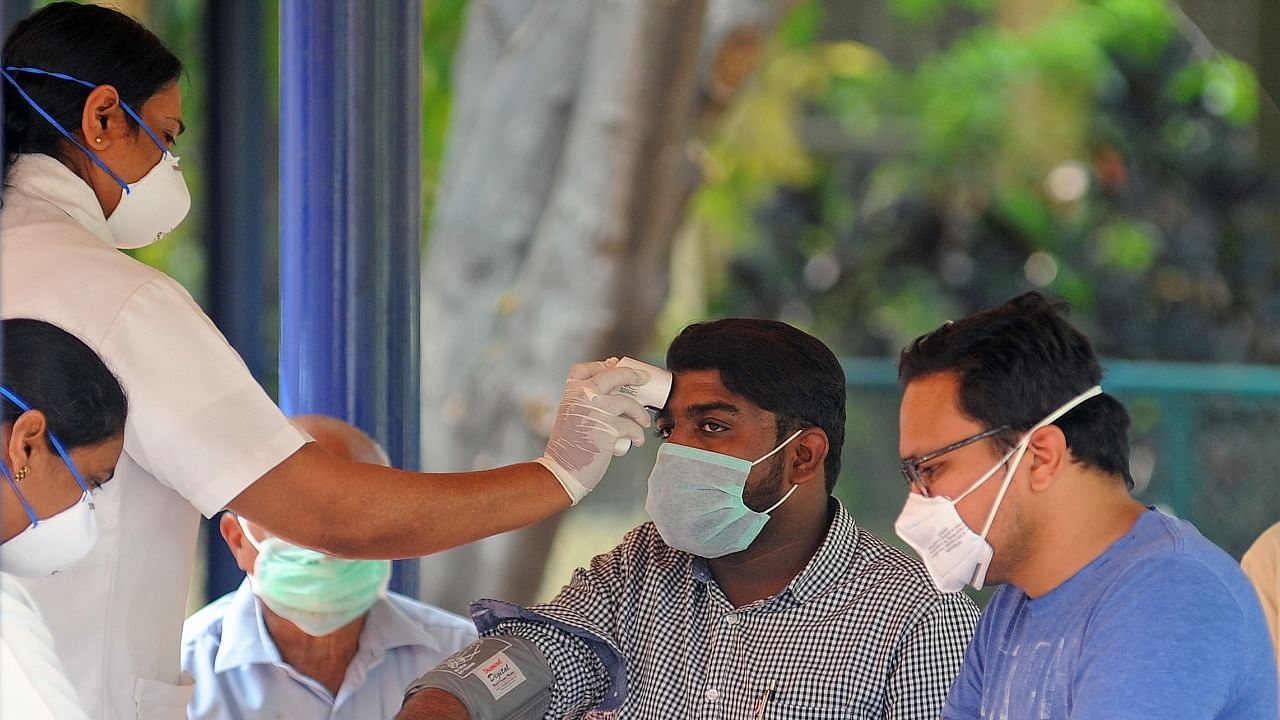
While Bengaluru was working on whittling down Covid-19 numbers from the second wave, it was simultaneously encountering a spate of non-Covid respiratory infections, data shows.
Some 35,255 such cases of non-Covid-related Influenza Like Illness (ILI) or Severe Acute Respiratory Infection (SARI) were recorded between May 1 and October 17 in the city, data captured by the Public Health Activities, Surveillance and Tracking (PHAST) portal shows.
"We only started collecting this data from May onwards because we did not have an idea of how many non-Covid ILI and SARI cases had been registered during the second wave. The idea was to track the cases before they progressed from ILI (which is marked by fever, coughs and colds) to SARI, which is accompanied by breathlessness,” said D Randeep, Special Commissioner (Health), BBMP.
Data on the incidence of such influenza cases, which has risen in recent weeks, provides some insight into how many people are getting infected in the city and at what ages. After the peak of the second wave, for example, municipal officials noted 16,585 ILI/SARI cases in May. The most infected were 5,870 people in the 30-45 age group.
The break-up of the overall May figures also shows that 9,770 cases were people with ILI and 1,457 were people with SARI. The remaining 5,358 were people suspected to have Covid-19.
"These suspected cases were tagged on the initiative of various hospital doctors, but we don't know how many went on to be subsequently designated as Covid-19 cases," said a war room official in the Bruhat Bengaluru Mahanagara Palike (BBMP).
However, an indication of this arises from the Rajiv Gandhi Institute of Chest Diseases (RGICD), which is the designated government hospital for non-Covid SARI/ILI cases in the city. "During the second wave, we were getting 20 to 30 cases of ILI/SARI per day, out of which 90% tested positive for Covid-19, and so they were subsequently moved to the Covid-designated hospitals," explained D C Nagaraj, director of the hospital.
"Now, numbers have actually increased from the second wave: About 40 to 50 cases per day, out of which 5-6% are testing positive for Covid-19," he added.
As per the data, these non-Covid infections began to die down from 4,958 cases in June to 3,957 cases in August. Following this, however, numbers began to rise again. In September, 4,070 cases were recorded in the city, and up to October 16, 1,744 cases had been noted.
In September, however, the major age group afflicted with ILI/SARI were 1,160 children aged 0 to 12, followed by 942 people aged 18 to 30. In October, the major-hit age group were again 547 children and 398 people aged 18 to 30.
"These younger age groups are affected due to a combination of happy hypoxia and greater exposure to dust or pollen," Dr Nagaraj said.
Meanwhile, Randeep noted that actual September-October figures are almost certainly higher as some private hospitals are not disclosing their cases to the government.
Dr H M Prasanna, president of the Private Hospitals and Nursing Homes Association (Phana), acknowledged this. "Because it is not mandatory to report, many private hospital staff who are already fatigued as a result of the pandemic are finding it tedious to upload data to not just PHAST but other portals as well," he said.